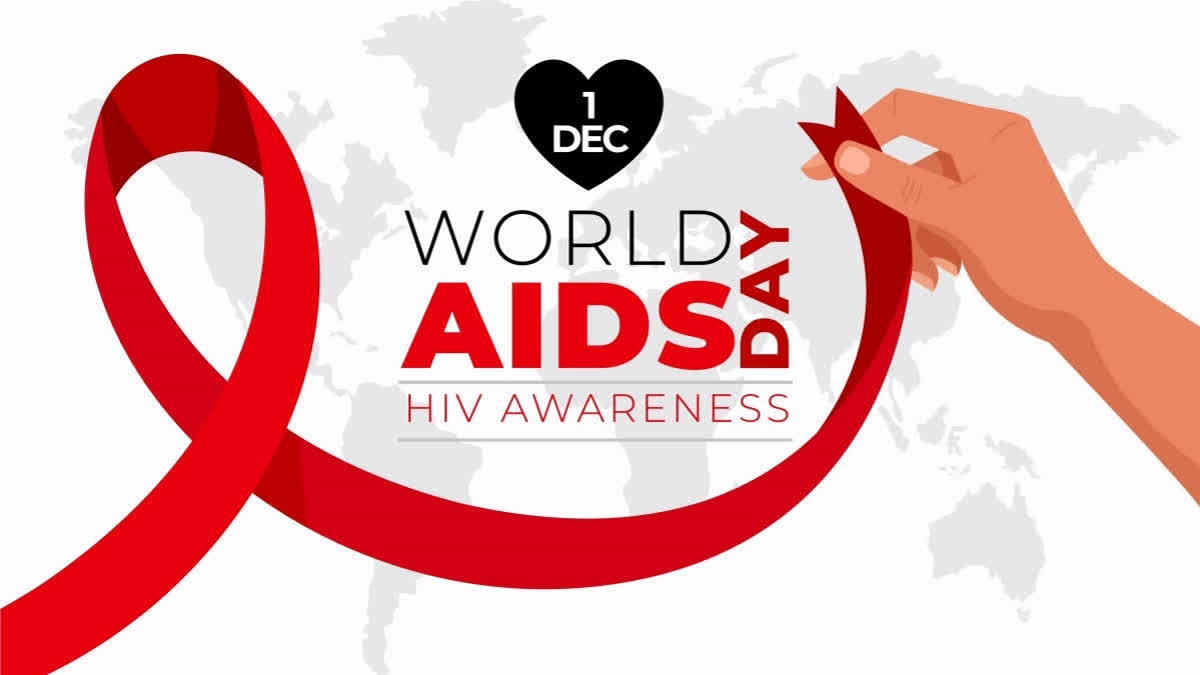Hyderabad: World AIDS Day serves as an important reminder that we must remain steadfast in our commitment to prevent new HIV infections and provide essential services to all people living with HIV globally. In 2024, we will commemorate the 37th World AIDS Day with the theme, “Take the rights path: My health, my right!”
What are HIV and AIDS?
About HIV
HIV (human immunodeficiency virus) is a virus that attacks cells that help the body fight infection, making a person more vulnerable to other infections and diseases. It is spread by contact with certain bodily fluids of a person with HIV, most commonly during unprotected sex or through sharing injection drug equipment.
About AIDS
AIDS is the late stage of HIV infection that occurs when the body’s immune system is badly damaged because of the virus. If left untreated, HIV can lead to the disease AIDS (acquired immunodeficiency syndrome).
History of World AIDS Day
World AIDS Day, observed annually on December 1st, was first established in 1988 by the World Health Organization (WHO) to focus global attention on the HIV/AIDS epidemic, raise awareness, and honour those who have died from AIDS. Created by public information officers James W. Bunn and Thomas Netter, it aimed to reduce stigma and educate the public.
The Joint United Nations Programme on HIV/AIDS (UNAIDS) took over in 1996, emphasising themes that evolved from general awareness to complex issues like human rights, gender equality, and social stigma.
Story Behind The Red Ribbon
The red ribbon is the universal symbol of awareness and support for people living with HIV. It was first devised in 1991 when twelve artists met to discuss a new project for Visual AIDS, a New York HIV-awareness arts organisation.
It was there that they came up with what would become one of the most recognised symbols of the decade: the red ribbon, worn to signify awareness and support for people living with HIV. The artists wanted to create a visual expression of compassion for people living with HIV and chose red for its boldness and for its symbolic associations with passion, the heart and love.
Stages, Signs and Symptoms of HIV
HIV symptoms can vary from one person to the next, doctors recognise these three stages of HIV: Acute HIV, Chronic HIV and Acquired immunodeficiency syndrome (AIDS)
Acute HIV Infection
Within two to four weeks after infection with HIV, about two-thirds of people will have a flu-like illness. This is the body’s natural response to HIV infection. Symptoms include Fever, Chills, Rash, Night sweats, Muscle aches, Sore throat, Fatigue, Swollen lymph nodes (Lymph nodes are small glands forming clusters in different body areas, such as the neck and underarms), Mouth ulcers, and Diarrhea.
Chronic HIV
The other name for this stage is an asymptomatic stage. In this stage, the virus still multiplies, but at very low levels. People in this stage may not feel sick or have any symptoms. This stage is also called chronic HIV infection. Without treatment, this stage can last 10 years or longer. If you take medicine, this stage can last for a long time. You may never move to the next stage.
Acquired immunodeficiency syndrome (AIDS)
When a chronic HIV infection moves on to AIDS, the amount of HIV in the blood shoots up and the amount of your infection-fighting immune cells drops. Symptoms of stage 3 HIV infection or AIDS include: Weight loss, Chronic diarrhoea
Night sweats, Fever Cough, Mouth and skin problems and other infections
Global HIV Statistics FACT SHEET 2024 (UN Report)
- People living with HIV:-39.9 million
- New HIV Infections:-1.3 million
- AIDS-related deaths:-630 000
- New HIV Infections (Adults, aged 15+):-1.2 million
- New HIV Infections (Children, aged 0–14):-120 000
- People accessing antiretroviral therapy:-30.7 million
- Every day in 2023, 570 young women and girls aged between 15 and 24 acquired HIV.
(Source: UNAIDS 2024 epidemiological estimates)
Access to HIV drugs
It is estimated that 292 million people use drugs every year, with only a small proportion developing a drug dependency. People use drugs in every region of the world. Men are more likely than women to use drugs, but women who use drugs are less likely to have access to treatment services for substance use. Data from 58 countries indicate that women who inject drugs are 20 per cent more likely than men who inject drugs to be living with HIV.
HIV Infections in India
As per the recent India HIV Estimations 2023 report, over 2.5 million people are living with HIV in India, the adult HIV prevalence is at 0.2 % and estimated annual new HIV infections are at around 66,400. New annual HIV infections have decreased by 44% since 2010, outperforming the global reduction rate of 39%.
Treatment of HIV
- HIV is fully preventable. Effective antiretroviral treatment (ART) prevents HIV transmission from mother to child during pregnancy, delivery and breastfeeding
- Someone who is on antiretroviral therapy and virally suppressed will not pass HIV to their sexual partners
- Condoms prevent HIV and other sexually transmitted infections, and prophylaxis use antiretroviral medicines to prevent HIV
- Harm reduction (needle syringe programmes and opioid substitution therapy) prevents HIV and other blood-borne infections for people who inject drugs
- HIV is treated with antiretroviral therapy consisting of one or more medicines. ART does not cure HIV but reduces its replication in the blood, thereby reducing the viral load to an undetectable level
- ART should be taken every day throughout the person’s life. People can continue with safe and effective ART if they adhere to their treatment. In cases when ART becomes ineffective due to reasons such as lost contact with health care providers and drug stock-outs, people will need to switch to other medicines to protect their health.
Champion access to life-saving treatment to achieve HIV viral suppression: With early diagnosis and consistent antiretroviral therapy, people living with HIV can lead long, healthy lives—just like those who are HIV-negative. Achieving and maintaining an undetectable viral load by taking antiretroviral therapy as prescribed means zero risk of transmission, empowering individuals and protecting communities.
Advance towards an AIDS-free future:-By protecting everyone’s right to health and bringing down new infections, we can achieve an AIDS-free generation and ensure the sustainability of the HIV response.



